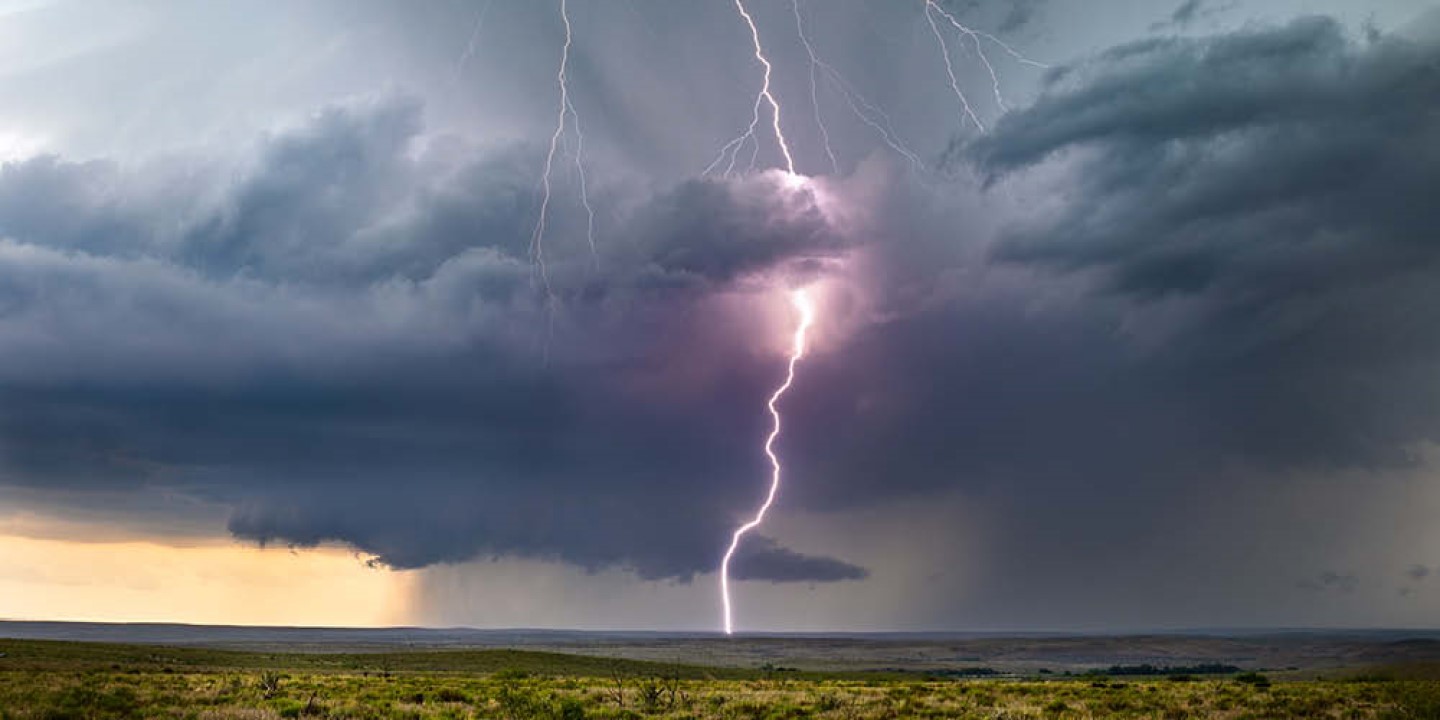Convective storms lead secondary perils to property
Zurich ProgramsArticleMay 7, 2024
The term “secondary peril” might suggest a lesser danger, but when it comes to natural catastrophes, secondary perils can shoot right to the top of the worry list for property owners and managers.
While “secondary perils” is sometimes used to describe smaller or mid-sized events, today the term is more commonly applied to events following a primary peril: such as flooding in the wake of a hurricane or fires coming after an earthquake. Secondary perils from natural catastrophes are increasing in frequency and exceeding loss totals from primary perils.1
The Rising Costs of Convective Storms
With the coverage of the aftermath of recent major hurricanes, most people are probably aware that post-storm floods are often more devastating than the immediate wind-driven destruction of a hurricane or other tropical storms. (Indeed, flooding is often categorized as a primary peril, even when following a storm.) However, many might be surprised to learn that severe convective storms (thunderstorms, tornadoes and hailstorms) claimed a whopping seven of the top 10 global insured loss events of 2023 according to one report.2
While primary perils may be more expensive on a per-event basis, the increasing frequency and severity of convective storms is adding up to eye-opening costs. There were 37 thunderstorms in 2023 that each resulted in losses of at least $1 billion, far above the average of 14 storms per year in that category.3 (Hurricanes are also convective storms, but as a primary peril, they are separated from this grouping.)
Mitigating Risks with Zurich Resilience Solutions
Program Administrators in any property-related sector need to be aware of this underreported risk and work with customers to help limit exposures and reduce potential impacts. Zurich Resilience Solutions (ZRS) is one resource to draw on for knowledgeable guidance, tools and services dedicated to helping meet the challenges of climate-related events. ZRS’ Extreme Weather Resilience can provide a number of valuable services, from natural hazard assessments to flood resilience strategies.
Beyond the years of experience and ever-growing knowledge base of ZRS’ own Risk Engineers and risk specialists, we also work with trusted vendors to make an even wider range of services available to businesses. Last March, a few of these valued collaborators participated in a ZRS Vendor Expo at Zurich North America’s headquarters in Schaumburg, Illinois. The event was held to grow awareness among Zurich employees outside of ZRS about these valued collaborations so they can be proactive in communicating the availability of these services.
Vendor Collaboration and Holistic Risk Services
Among the vendors participating at the Expo were property restoration specialists BluSky, which provides restoration and renovation services for commercial, healthcare, industrial, governmental and residential buildings. BluSky works in collaboration with Zurich North America’s Claims team to respond to fire, smoke, water and storm damage, including environmental services and commercial roofing work. They also work with customers on preventative, pre-loss strategies.
BluSky representatives at the Expo described the company as a “one-stop shop” for restoration, with services that can begin with cleanup work in the immediate aftermath of a disaster and continue through completion of property repairs and/or renovations. In responding to damage resulting from a convective storm and any related flooding, BluSky specialists can perform water extraction and pumping; structural drying; temporary power distribution; infrared moisture detection; sewage cleanup and sanitation; and even total reconstruction of water-damaged property.
Another vendor at the Expo showed how sustainability planning and disaster mitigation can go hand-in-hand. Conservations Labs provides water-monitoring technology and services that can improve the efficiency of buildings by reducing water consumption while also helping property managers reduce the risks of catastrophic water events.
Conservation Labs’ easy-to-install monitors identify leaks and then property managers or staff are notified via email or text message. The leaks are measured and ranked by type of event, fixture classification, and the amount of water used, so the magnitude of the leak is quickly known.
While notification of potentially catastrophic leaking may be the most critical information these monitors provide, informing customers of non-emergency leaks — as well as the general level of water use in a building — can save a business tens of thousands of dollars a year in water waste and energy costs.
These are just a couple of examples of the specialized, third-party services ZRS works with to better serve customers in preparing for and responding to severe weather events, including secondary perils like convective storms.
As ZRS Head of Strategy, Business Planning and Marketing Lisa Dutkanych explained, “Our vendor partners are a vital component when it comes to supporting our customers throughout North America. They complement and support our in-house technical expertise and enable ZRS to stand out as a differentiator by providing holistic risk services solutions to our customers.”
1. Howard, L.S. “Rising Costs of Secondary Perils Force Reinsurers to Require Higher Attachment Points.” Insurance Journal. 31 January 2023.
2. Gill, Mehr. “New normal: Secondary perils are reshaping dialogue on cat losses.” Insurance Insider: 1 February 2024.
3. Naik, Gautam. “After $70 Billion Hit, Insurers Wake Up to Growing Risks of Severe Convective Storms.” Insurance Journal. 25 January 2024.
